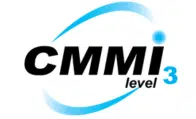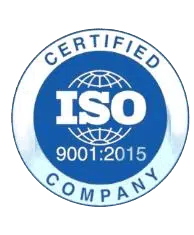Introduction to HL7 and the ORC Segment Health Level Seven (HL7) is a set of international standards for the exchange, integration, and retrieval of electronic health information. It facilitates seamless communication between healthcare systems, enabling interoperability across different platforms, such as Electronic Health Records (EHRs), laboratories, and pharmacies. HL7 plays a critical role in improving data accuracy, reducing errors, and enhancing the efficiency of healthcare delivery. One of the key components of HL7 messaging is the Order Control (ORC) segment, which is part of the standard protocol for managing clinical orders. The ORC segment provides essential details about the control, status, and handling of medical orders, such as medication prescriptions, lab tests, or imaging requests. It ensures that orders are accurately transmitted and tracked within the healthcare system. By standardizing order communication, the ORC segment enhances data consistency, supports effective clinical workflows, and ensures timely delivery of patient care services. Understanding different HL7 segments, including ORC, is essential for seamless healthcare interoperability. If you’re looking for a deep dive into HL7 ADT event types and their significance, check out our detailed guide on HL7 ADT event types Structure of the ORC Segment The Order Control (ORC) segment in HL7 messaging provides critical information about the management and status of medical orders. It serves as a foundational component for order communication, ensuring that each order is accurately tracked and processed. The ORC segment consists of multiple fields, each serving a specific purpose in the order lifecycle. Key Fields in the ORC Segment: ORC-1 (Order Control):This field specifies the action being performed on the order, such as placing a new order, canceling an existing one, or modifying an order. Common values include “NW” (New Order), “CA” (Cancel Order), and “RE” (Release Order). ORC-1 provides clarity on the status and intent of the order. ORC-2 (Placer Order Number):The Placer Order Number is a unique identifier assigned by the system or provider initiating the order. This field ensures that orders can be tracked back to their origin, facilitating accurate order management and reducing the risk of duplication or loss. ORC-3 (Filler Order Number):Assigned by the system fulfilling the order (e.g., a laboratory or pharmacy), the Filler Order Number is used to track the order’s processing and completion status. It helps ensure that the order results are accurately linked to the original request. Importance of Accurate Field Population: Accurate and consistent population of ORC fields is essential for effective communication between systems. Errors in these fields can lead to miscommunication, delayed treatments, or even incorrect patient care. By adhering to HL7 standards and ensuring accurate data entry, healthcare organizations can maintain seamless interoperability, streamline workflows, and improve patient outcomes. Each ORC field plays a vital role in the order management process, supporting efficient and error-free healthcare delivery. Standards Governing the ORC Segment The ORC (Order Control) segment is defined and regulated by HL7 Version 2.x standards, which are widely adopted in healthcare for structured messaging and data exchange. These standards establish clear guidelines for the structure, sequencing, and field requirements of the ORC segment, ensuring that data is communicated consistently and accurately across systems. Each field within the ORC segment has a specific data type and length, ensuring uniformity in how information such as order control actions, identifiers, and status updates is transmitted. HL7 standards specify that the ORC segment can be used independently or in conjunction with other segments like OBR (Observation Request) and RXO (Pharmacy/Treatment Order), depending on the type of medical order. This flexibility allows the ORC segment to handle diverse clinical workflows, from medication prescriptions to diagnostic test requests. Compliance Requirements Healthcare organizations must comply with HL7 standards to achieve seamless interoperability. This involves adhering to proper field usage, ensuring unique identifiers for orders, and validating data accuracy before transmission. Compliance also supports regulatory requirements, such as those outlined by HIPAA, which emphasize secure and standardized data exchange to protect patient information. Role of the ORC Segment in Standardized Data Exchange The ORC segment plays a pivotal role in maintaining consistency and reliability in clinical communication. By providing a standardized framework for order-related data, it ensures that information flows smoothly between disparate systems, reducing the risk of errors, delays, and misinterpretations. This standardization ultimately enhances care coordination, patient safety, and the overall efficiency of healthcare delivery. Best Practices for Implementing the ORC Segment Implementing the ORC (Order Control) segment in HL7 messaging requires careful planning and adherence to best practices to ensure data integrity and seamless communication. Below are key guidelines and solutions to common challenges: 1. Guidelines for Correctly Populating ORC Fields Standardized Field Usage: Populate each field in the ORC segment according to HL7 specifications. For example, use predefined codes for ORC-1 (Order Control) to clearly indicate actions like “NW” for New Order or “CA” for Cancel Order. Unique Identifiers: Ensure that ORC-2 (Placer Order Number) and ORC-3 (Filler Order Number) are populated with unique, system-generated values to prevent duplicate or mismatched orders. Consistent Data Formats: Follow consistent date, time, and alphanumeric formats in fields like ORC-9 (Date/Time of Transaction) to avoid parsing errors. 2. Common Challenges and Solutions Data Entry Errors: Manual data entry can lead to inaccuracies. Solution: Implement automated data capture tools and use dropdowns or pre-filled templates to minimize human error. System Integration Issues: Incompatibilities between systems can disrupt data flow. Solution: Perform compatibility testing and ensure all systems follow HL7 standards for smooth integration. Resistance to Change: Staff may hesitate to adopt new workflows. Solution: Conduct training sessions and emphasize the benefits of accurate order management. 3. Importance of Testing and Validation Thorough testing is essential to ensure the ORC segment functions correctly within the broader HL7 message framework. Conduct end-to-end validation to verify that all ORC fields are accurately populated, transmitted, and interpreted by receiving systems. Regular audits and system updates are also critical to maintaining compliance and optimizing performance. By following these best practices, healthcare organizations can achieve efficient and error-free implementation of the ORC segment, ultimately improving patient care and
- TransformWith AI
- Solutions
-
-
- Healthcare Software DevelopmentHIPPA compliance healthcare Development
- Healthcare Integration SolutionsHL7, FHIR, MIRTH, HIE & More
- Content Management DevelopmentCost-effective content management
- CRM Solutions ExpertStrengthen customer relationships
- eLearning SolutionsDigitalize your learning journey
- Smart Finance SolutionsStrategic consulting for growth
- Optimal Fleet ManagementEnhance fleet efficiency
-
- Operations ManagementOptimize operational processes
- Web PortalsTransform web experiences
- Human Resource ManagementOptimize HR processes
- Workforce ManagementStreamline workforce operations
- RPA SolutionsAutomate, Simplify, Excel
- Supply Chain ManagementImprove supply chain efficiency
- dummy menuAutomate, Simplify, Excel
-
-
- Services
- Industries
- Technologies
- Case Studies
- About Us
What's next?
-
Our expert reaches out shortly after receiving your request and analyzing your requirements.
-
If needed, we sign an NDA to protect your privacy.
-
We request additional information to better understand and analyze your project.
-
We schedule a call to discuss your project, goals. and priorities, and provide preliminary feedback.
-
If you're satisfied, we finalize the agreement and start your project.

Most Trusted Software & Mobile App Development Company on Clutch

1016 W
Jackson Boulevard Chicago
IL 60607
+1 307 459 0850

1603 Capitol Ave
Suite 310 A124
Cheyenne, WY 82001
+1 307 459 0850

5301 Southwest Pkwy.
Suite 400 TX102
Austin, Texas (TX) 78735
+1 512 508 8008

H-163, Ground Floor,
Sector 63, Noida
201301, India
+ 91 89206 24876
Case Study
Company




Full stack mobile (iOS, Android) and web app design and development agency
Statutory legal information
© 2012~2025 Taction Software LLC

